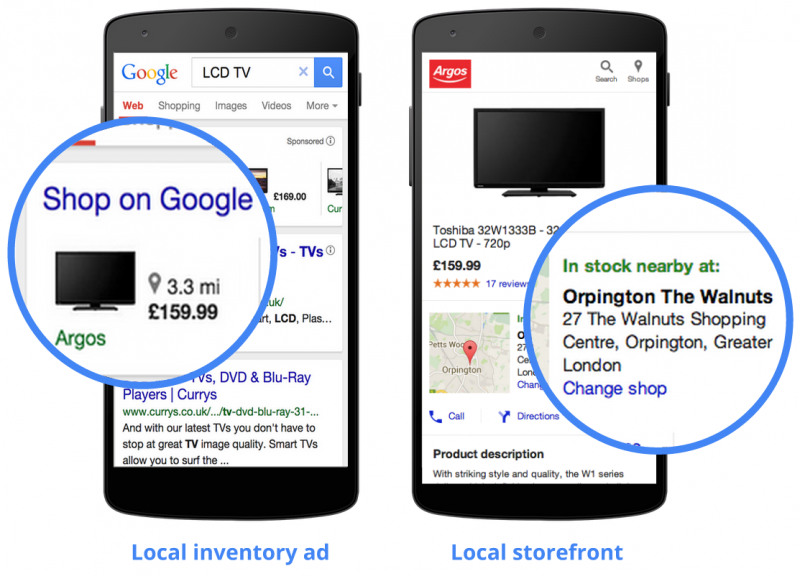Data Backed PPC Strategies To Help You Generate A Higher Return On Investment
If you are a marketer, looking to get the maximum ROI out of your PPC campaign, then look no further. It’s quite common as most of us have been there. But you must know the fact, that bigger ad words budget, will yield greater results. This is what data suggests. According to word stream more than 18,000 reports were analyzed through the use of Ad words Performance Grader. Advertisers spend around $50,000 a month and nothing less. if you are spending high, then chances are that you will see a bigger ROI.
Finding success with Ad words is not just about spending the dough. Dig deeper and you will find more to it. Put in the effort and remain active with your account. Yielding high ROIs with the preferable size of your budget is also a determining factor. Big spenders are laying over around $50,000 each month or may be more, to remain active in their accounts. Here is what you can learn from these top spenders and here is what you can do about it. 5 data backed strategies that yield higher ROI are laid out as examples here in this article. They are as follows:-
1. Advertisers with big spending uses larger volume of negative keywords
Negative keywords can do wonders for your campaign. They are often too soon put on the backburner. If you have been using regular keywords and similar match types, you might want to use your negative a bit. If you don’t, then this may lead to wasted and irrelevant clicks. This is one way to burn your budget without seeing conversions happen from your account spending. Account managers who spend tons on ad words accounts also spend a lot of time adding negative keywords to their account. Many ad words account that are of low spend, do not use negative keywords. According to statistics, at least 62% of accounts have less than 250. On the other hand at least 98% of high column spending accounts have more than 250 negative keywords.
Bidding correctly will take you somewhere, but if you are still unable to find conversions, then it is probably due to the fact that, people or the audience is not interested. It is more likely possible that you haven’t configured negatives that might be leading to impressions that are irrelevant. Such impressions are stealing your small budget from folks who are interested in your offer. If you have a small budget, then you can ignore negative keywords.
Here is an example – Let’s say you have luxury loafers and you are bidding for keywords men’s shoes. If you are looking to serve ads for all these terms, then you must notice that many of them are just too broad. Other is probably just off brand. Monthly volumes of such terms are very high and will eat up your entire budget with just a few clicks. Thus this is something that every account manager should have figured out by now. Thus they should spend extra time or every day, going through different search queries or a whole list of search queries, to find out new negatives for different ad groups and campaigns in their accounts.
Such research and study will help you chalk out keywords and search terms that have already converted and filter them out. Begin by sorting them by impressions from the list and find out which keywords are costing your money. The search query report is a great way to find out which keywords are costing you money. This keyword report is also a great way to discover new keyword opportunities for your account.
2. Big spenders of the dough are using 4361% of more ad extensions
Got ad extensions? Use them! Not using the ad extensions would be like skipping a free meal at one of your favorite restaurants. Don’t pass on with the ad extensions. Don’t let this happen with your ad extensions. They help you increase the real estate of the ad with minimal effort and thus lead to bigger chances of receiving clicks and conversions.
In a pool of 450 top spenders who were analyzed, there was a total average of 4361% more ad extensions in comparison to 17,587 low spending accounts that were analyzed. They have 31 ad extensions for every text ad that there is. Small spenders commonly operate on a one to one ratio. In comparison to the low spenders, big spenders have extensions who has enabled more than half of their ads is around 48%, where as the low spenders are 17% of such ads. This way the opportunity to enable ad extensions on the rest of the 83% of the ads is there.
This is a great way to achieve better results from the ads, without spending a dime. Ad extensions are absolutely free. There is a wide range of ad extensions to choose from. This includes ad extensions including site link extensions, call extensions, and review extensions. This helps add extra conversion path for searchers. Here is an example:- if a user stumbles upon your ad for searching for ‘fall bags’, your site link extension of ‘fall boots’ or BOGO might seem to attract their eyes. Configure this opportunity.
3. Landing pages are a big factor for spenders who can afford to spend more
Let’s suppose you have a well structured PPC ad words account. It has all the keywords that convert, ad extensions, well written ad copy, conversion tracking and everything that needs to be there to create a complete campaign. You must also remember the fact that, you need to have multiple landing pages where you can send your traffic to. Having just one landing page means nothing or is not enough. Big spenders are aware of this and thus they diversify their landing pages that are tailored to deliver the ads. This way people who are searching for your ads or prospects will respond better to your landing pages that has the search queries and the ads that are most likely to click on.
In one of the account, more than 26% or at least 1 out of 4 of low budget spending accounts has just one single active landing page. This is in comparison to all the 4 percent of all the big spenders of ad words account. If you are low spender, or running on a low budget, then you may not have the design resources that would help you create that landing page that would yield conversions. The least you could do is to copy your landing page template and make the ad copy relevant.
When you do this, then you will automatically find that it will improve searcher’s experience this would also be language specific and help improve the relevancy for all your users. It also helps enhance the quality score algorithm that leads to higher placements in SERPs on a low budget.
4. Tracking conversions is a religion in PPC and should be followed religiously
Big spenders swear by it. Tracking conversions is not a no brainer after all. All advertisers, big or small, spend at least 50k per month for conversion tracking. Conversion tracking is an important part in yielding a positive ROI in Ad Words even if you have a huge CTR on your ads. If you are not sure if the clicks are converting, then you are probably not on the right track. You need to be transparent and you need to be exactly sure or things must be visible as to how many click, impression and conversions have occurred; what the CTR is and what the CPC, CPM or CPA is.
There is also a positive side to this. Conversion tracking is an important factor and most marketers or ad word professionals realize that. Only 7% of low budgeted accounts have not enabled conversion tracking for their accounts. Conversion tracking should be your foremost priority, whether be it $5 or $5million that you may be spending on your ad words account. Setting up a conversion tracking for your website is quite simple and won’t cost you a dime. Learning how to do conversion tracking in Ad words must be your first and foremost priority.
5. Advertisers who can spend a bigger amount on Ad words tend to be more active
Tracking conversions will allow you to take actions for your ad words account and grow your account accordingly. A proper conversion tracking code will enable you to track conversions and source of conversions. You must take some kind of action, including creating an account, or optimizing your Ad words account, evaluating the performance of your ads, creating a search query report or any such similar thing is an important recipe and counts towards your success.
Maintaining an Ad words account, will need continuous monitoring. If you want to improve anything, then look into your account on a regular basis. People spending more than 50k are spending more time and money into their accounts than spending more time here. According to statistics big spenders are more active by 1196% and thus they are getting better results.
Summary
In order to be successful in Ad words, you must have a total budget of $50,000. You know what they say, with bigger amounts, comes bigger responsibility. Thus accounts or businesses that spends a lot, usually spends a lot more TLC in their accounts and thus find higher return on investments. In case you are unable to return your budget, do not feel let down or discouraged. Use all the tips above to start treating your account with care like the big advertisers do. Whether be it diversifying the landing pages, adding more negatives to your campaign, configuration of site link extensions, or any such step, to make better use of your budget. The primary motive would be to achieve a higher ROI without spending more.



